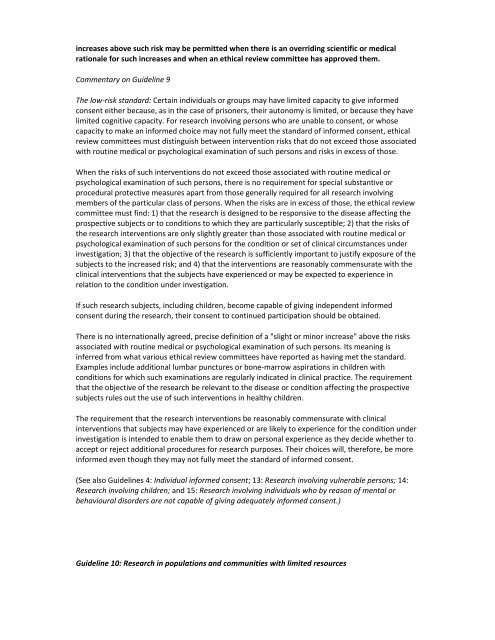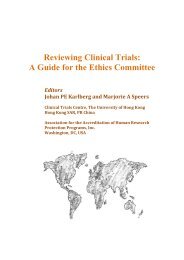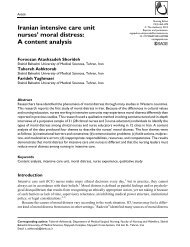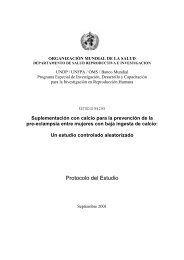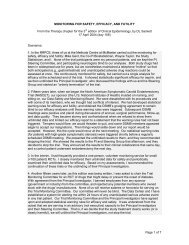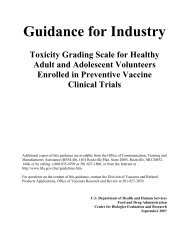CIOMS Guidelines - Global Health Trials
CIOMS Guidelines - Global Health Trials
CIOMS Guidelines - Global Health Trials
- No tags were found...
You also want an ePaper? Increase the reach of your titles
YUMPU automatically turns print PDFs into web optimized ePapers that Google loves.
increases above such risk may be permitted when there is an overriding scientific or medicalrationale for such increases and when an ethical review committee has approved them.Commentary on Guideline 9The low-risk standard: Certain individuals or groups may have limited capacity to give informedconsent either because, as in the case of prisoners, their autonomy is limited, or because they havelimited cognitive capacity. For research involving persons who are unable to consent, or whosecapacity to make an informed choice may not fully meet the standard of informed consent, ethicalreview committees must distinguish between intervention risks that do not exceed those associatedwith routine medical or psychological examination of such persons and risks in excess of those.When the risks of such interventions do not exceed those associated with routine medical orpsychological examination of such persons, there is no requirement for special substantive orprocedural protective measures apart from those generally required for all research involvingmembers of the particular class of persons. When the risks are in excess of those, the ethical reviewcommittee must find: 1) that the research is designed to be responsive to the disease affecting theprospective subjects or to conditions to which they are particularly susceptible; 2) that the risks ofthe research interventions are only slightly greater than those associated with routine medical orpsychological examination of such persons for the condition or set of clinical circumstances underinvestigation; 3) that the objective of the research is sufficiently important to justify exposure of thesubjects to the increased risk; and 4) that the interventions are reasonably commensurate with theclinical interventions that the subjects have experienced or may be expected to experience inrelation to the condition under investigation.If such research subjects, including children, become capable of giving independent informedconsent during the research, their consent to continued participation should be obtained.There is no internationally agreed, precise definition of a "slight or minor increase" above the risksassociated with routine medical or psychological examination of such persons. Its meaning isinferred from what various ethical review committees have reported as having met the standard.Examples include additional lumbar punctures or bone-marrow aspirations in children withconditions for which such examinations are regularly indicated in clinical practice. The requirementthat the objective of the research be relevant to the disease or condition affecting the prospectivesubjects rules out the use of such interventions in healthy children.The requirement that the research interventions be reasonably commensurate with clinicalinterventions that subjects may have experienced or are likely to experience for the condition underinvestigation is intended to enable them to draw on personal experience as they decide whether toaccept or reject additional procedures for research purposes. Their choices will, therefore, be moreinformed even though they may not fully meet the standard of informed consent.(See also <strong>Guidelines</strong> 4: Individual informed consent; 13: Research involving vulnerable persons; 14:Research involving children; and 15: Research involving individuals who by reason of mental orbehavioural disorders are not capable of giving adequately informed consent.)Guideline 10: Research in populations and communities with limited resources


